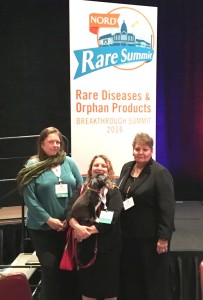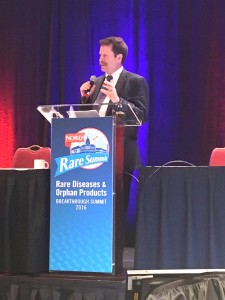
Leslie, Amy, Sam and Eugenia
The speed at which researchers are discovering new ways to identify, treat, and prevent diseases increases with each passing year. Advances in genetic innovation are producing real-world results that will benefit future case diagnoses and gene therapies. If you are interested in the science behind genetic research, you can learn more by researching Whole Exome Sequencing (WES). Definitive results derived from WES lead to new clinical information, newly published diseases, improvements to the bioinformatic pipeline, and research studies. In other words, genetic research reveals many valuable clues in the quest to identify and treat rare diseases such as Cushing’s.
Another technology becoming more widely available that will assist in better diagnoses in non-typical environments is telemedicine. It has actually been around since 1995, with the state of Georgia being a leader in early use of the service. Telemedicine allows a specialist to attend appointments via teleconference with general practitioners who are trying to diagnose and treat diseases in patients who can’t get to a specialist for geographic or financial reasons. The Telehealth Network in Georgia’s mission is that no patient has to travel more than 30 minutes for treatment. In rural Waycross County, all public schools have this tool. As of right now there are 29 states where insurance allows payments for treatment via telemedicine. All diagnostic measurements and video are transmitted to the specialist who interacts with the patient and attending doctor.
An ongoing topic of high relevance is collaboration across borders – establishing registries for clinical trials, gaining a global perspective, and cooperation amongst regulatory organizations. There was a lot of emphasis put on the importance of the trials, but there are also roadblocks to conducting them in many countries. The definition of a “meaningful endpoint” can be different from country to country, but international registries seeking patient input are working to standardize this issue. Not all countries are interested in allowing trials because they are skeptical of how the “during” and “after” will be handled.
The FDA is recognized by some countries but not by others. There are two international bodies – the European Medicines Agency (EMA) and EURORDIS – Rare Diseases Europe; these are the rough equivalents of our FDA and NORD, respectively. EURORDIS frequently serves as a go-between for pharmaceutical companies and foreign countries that need donations of medications and supplies – often regulations will not allow pharmaceutical companies to donate directly to the country but the items can be distributed through EURORDIS. Our doctors and regulators are excited to see the U.S. starting to open itself up to the world, and NORD is directly involved in this movement that is also bringing developing countries into the mix
.
The United Nations (UN) inaugurated the NGO Committee for Rare Diseases on November 11, 2016 with the commitment to address the 6000+ rare diseases in the world by bringing visibility and understanding about rare diseases to the UN. They aim to elevate and support UN action on rare disease issues; the UN has been involved in public health and human rights for over 70 years. For more information visit NGO Committee for Rare Diseases.
At the top of most peoples’ lists is the future of the Affordable Care Act (ACA) and research funding, and the general direction the new administration will take for rare disease patient issues. Everyone was waiting to see who would be elected to know how things would proceed from 2017. At the time of this writing, many facets of the ACA are up for consideration. Without a clear replacement for the ACA, it is hard to predict the kind of care we can expect for long-term illnesses and those that require expensive treatments. The scientific community is doing a bit of breath holding because there’s no telling how progress on research, clinical trials, and international registries may be affected by changes in funding or regulations. It’s hard to wait and see, but that is where we stand as of right now. Thankfully rare diseases are now a regular part of the medical dialogue in the international community. To quote one of the speakers, “If the patient wins, clinical and financial success will be achieved by all patient stakeholders.”

Robert Califf, MD, FDA Commissioner
By Leslie Edwin, Director, Spring, 2017




Sorry, comments are closed for this post.